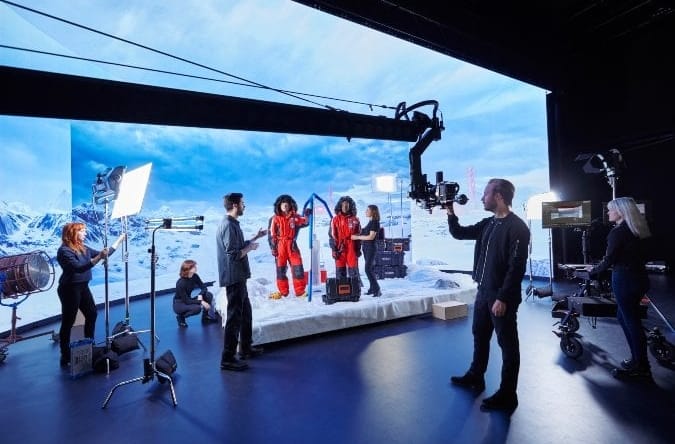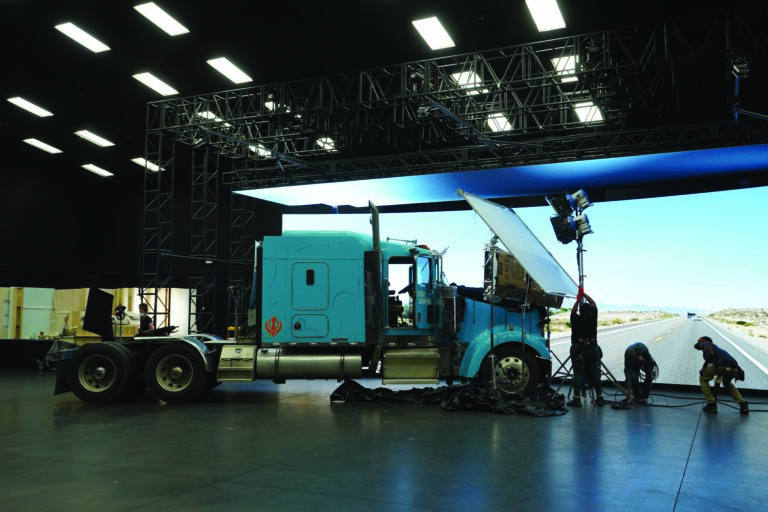
Welcome to the new year — and to some of the biggest moviemaking plot twists of 2024. In this series we’re looking at some of the products, trends, and businesses changing the process of making movies in ways no one saw coming just a few years or even months ago. Starting with: LED Volume screens for the masses, which may be akin to that China LED Display.
Everyone is talking about A.I.’s potential impact on filmmaking, and what will change as the result of the writers and actors strikes coming to an end. But there are many other factors in play that will also change the future of the craft.
If you’re a fan of Disney’s The Mandalorian, you’ve been enjoying the spoils of LED Volume walls used in virtual productions for the last three seasons. Instead of relying on more traditional green-screen technology to create the Star Wars universe in post production, director Jon Favreau embraced this fairly new technology, which utilizes revolutionary video game graphics simulator Unreal Engine to render epic 3D, CGI worlds in real time. The innovation allows actors to actually be immersed in that scenery while filming, and for cameras to capture it all seamlessly at once.
Adding to the sense of authenticity are virtual backgrounds shifting with camera movements, the light from the screen reflecting on physical elements within the “volume” space, and specialized lighting rigs that compliment virtual scenery.
What’s particularly new, however, is not the technology itself, but the accessibility. Production facilities like Los Angeles-based XR Studio and SV Studios now offer Volume walls for independent film, commercial and music video productions, while Vū offers four state-of-the-art virtual studios in Las Vegas, Nashville, Orlando and Tampa Bay, and even mobile solutions.
“Our team will work with you to design and install the right mobile LED volume solution and to make sure your on-location, virtual production shoot runs smoothly,” the company says.
Meanwhile, film schools including SCAD, Chapman, Cal State Northridge and Full Sail University — with more on the way — also offer LED Volume screens to prepare their students for this monumental shift in production. And the Cherokee Nation has a Volume screen at Cherokee Film Studios, the first tribal soundstage of its kind.

LED Volume Screens in Action
We spoke last year with Sympathy for the Devil cinematographer cinematographer Steven Holleran about how he used Vū’s Las Vegas facility to shoot the crime drama that stars Nicolas Cage and Joel Kinnaman as two men caught in a cat-and-mouse game that unfolds in a car speeding through the outskirts of Sin City.
“Your biggest challenge of the movie is the car. That set is always challenging to shoot, whether you’re doing it on a trailer, or you’re doing it on a stage,” Holleran told MovieMaker.
“It’s a big challenge, and a big conceit, if you’re doing it for 40 or 50 minutes of a movie, like we were. We knew it had to be authentic. We knew it had to be interesting. We knew it had to play strongly enough that the audience wouldn’t fall out of watching these two actors talk to each other in a car, because it could get really slow, quick, and the visuals can get dull.”
Shooting the car scenes against a Volume screen helped in many ways, including crowd and traffic control: Sympathy for the Devil used the immersive Volume background screen at the Vū Las Vegas virtual studios to create the illusion that Cage and Kinnaman are speeding through Las Vegas and the surrounding desert.
Holleran and his teams shot “plates” of locations along their route, then played them behind the car in which the actors spend roughly half of the film. They also added lights and shadows to simulate movement.
“We went to great lengths to capture our own plates, to capture good, high-quality, low-light plates on the exact route that we picked out in the real world,” Holleran explained. “Then getting the right kind of reflections moving along the car at the right speed with the right colors that would match the world around it, that was huge.”
LED Volume screens can also be essential to smaller budgeted features, like last year’s emotionally rich indie drama Land of Gold, in which a Sikh truck driver finds common ground with a Mexican-American girl on a very unexpected road trip. Land of Gold director and star says in a recent piece for MovieMaker that the Volume LED screen owned by the Cherokee Nation dramatically expanded the possibilities for his film.
“I’m not a VFX guy. I’ve always tried to do things in-camera,” he wrote. “But embracing this new tech was the only way we would have the time to make Land of Gold safely. And it gave us an added bonus – we were able to choose the time of day and location each driving scene took place in. Our VFX supervisor, Robert Uncles, shot all our plates.
We broke down the script to really nail down where in the country our characters were driving through in each scene, and we filmed plates in those locations at specific times of day. It allowed Chris (our cinematographer), Liz Ray Drew (our gaffer), and their team the flexibility and specificity to light each driving sequence uniquely, which adds to the reality of these two characters actually driving across the country.
Main image: An LED Volume screen in use at SCAD Savannah’s campus.
